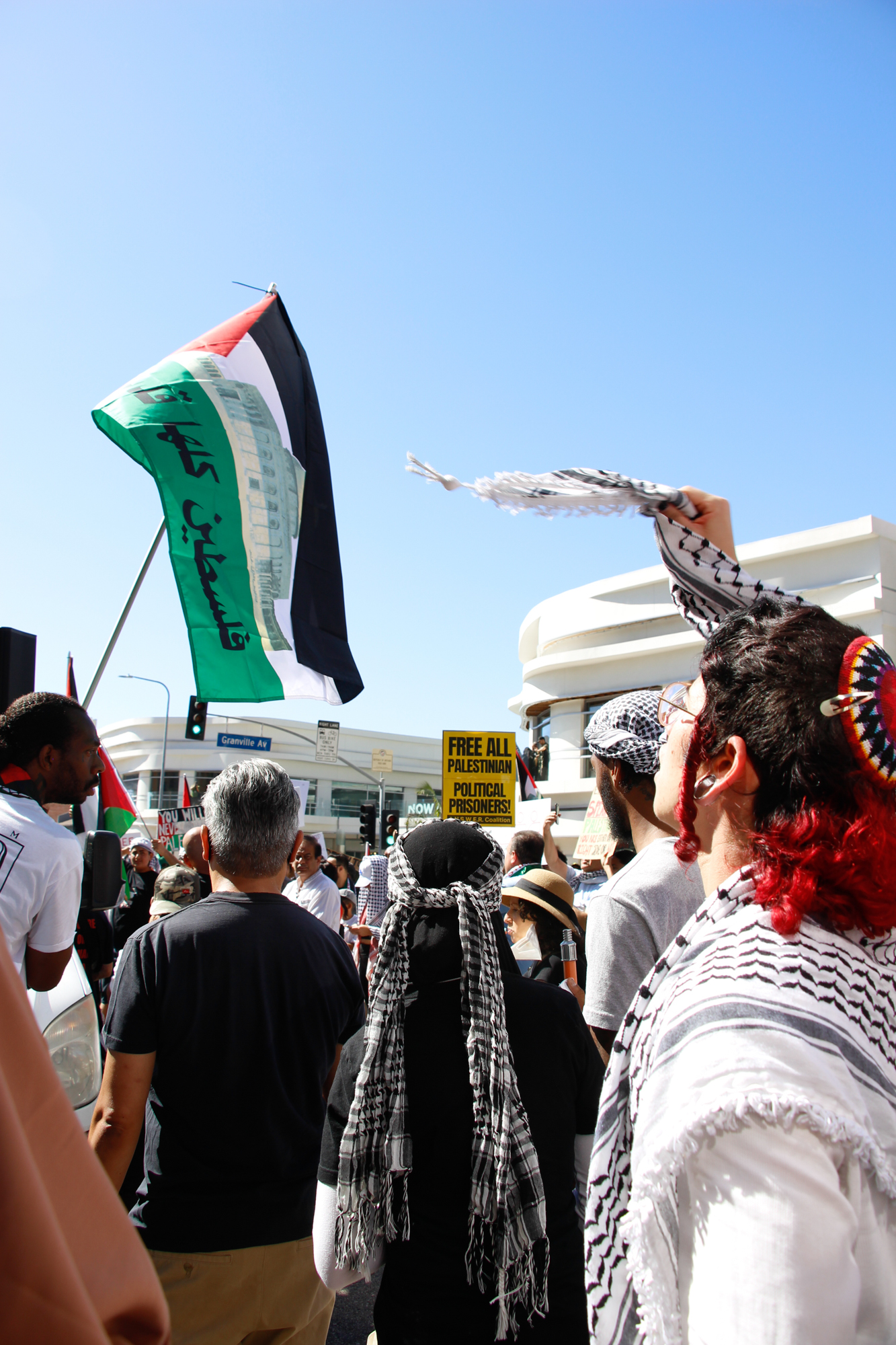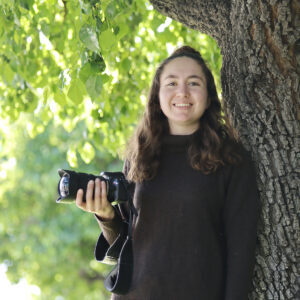“People love dead Jews” is a phrase — originating from the title of Dara Horn’s book — that I’d seen circulating online for a few years, but the truth of its words didn’t click for me until the events of the past few weeks.
After stressful, nonstop scrolling — to the point where my iPhone was constantly overheating in my hands — between group chats on Whatsapp, X (formerly known as Twitter) accounts of on-the-ground reporters in Israel, Jewish subs on Reddit, and the live blogs of several news outlets, I saw a flyer for a Los Angeles Jewish Community Vigil for Israel and prepared to go out and cover the event as a community college-based student photojournalist.
I wanted to do something: contribute to documenting this moment in history and its expected reverberations throughout the world, capturing the ways that communities in Los Angeles would be impacted.
The LACCD (Los Angeles Community College District) Chancellor and Board of Trustees released a statement on Oct. 8, but aside from that my campus had been mostly quiet, so I looked outward. After the vigil, I would photograph three additional community events in the next two weeks.
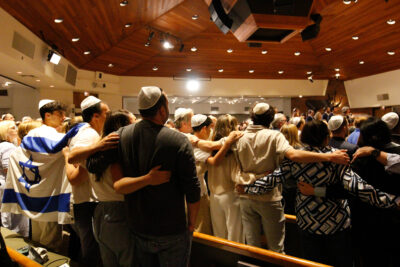
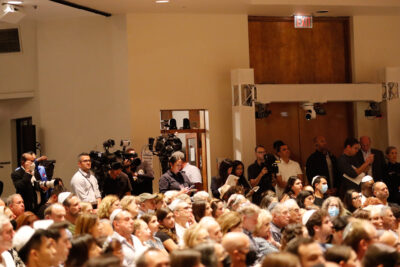
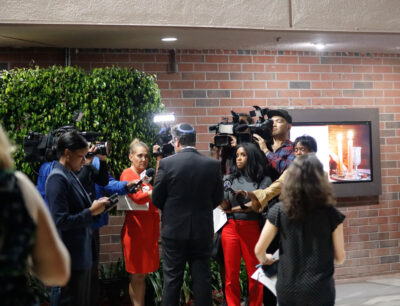
Professionally, the vigil was an inspiring event to cover because I met with photographers from major news outlets, but personally, I was more conflicted. It shouldn’t have been so easy, so seamless a transition, for me to smile and laugh in those moments, unintentionally losing sight of where I was and why members of LA’s Jewish community and elected officials were gathering in the room. Though, in the time period before and after the service itself, the atmosphere in the room did feel lighter.
Of all the events I’ve attended, this one had the greatest amount of media. It felt as if the news of the night was watching diaspora Jews grieve what had unfolded over the weekend. Was I, too, contributing to this phenomenon — an attraction to Jewish suffering, an interest in Jewish tragedy — by being in the room solely as a photographer?
My professors teach that we can either pick up a sign and flag and join the protest, or we can pick up a camera and pen to cover the event as a journalist, but never both.
What was the right way to be – to feel – in such a context, where my Jewish identity and journalism studies were colliding? A majority of my family members, and many friends, were in a war zone, after the deadliest attack on Jews since the Holocaust, and I was just here, photographing a vigil.
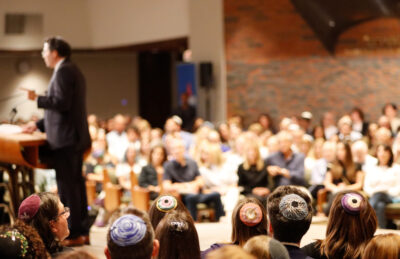
After the Oct. 8 event, next up were three demonstrations — one Palestinian rally on Saturday and one Israeli march on Sunday, then another Israeli march and vigil the following Sunday.
I felt like a “woman without a mission.” In a break from the norm, I wasn’t covering these events on assignment for my campus newspaper, nor did I have a specific photography project idea in mind.
While before, I dismissed practical matters such as mobility and physical safety, I now had to take them seriously, as I know protests can sometimes get rough.
Typically, I take two cameras, both strapped diagonally over my neck — a wide angle on my left and a zoom on my right — and a small purse with backup equipment, a notebook and a pen. For the rallies, I switched to a double camera harness for the first time, so my arms and shoulders would be more mobile and it would be easier to move quickly.
Instead of driving and parking, I was dropped off and picked up at planned-out locations, so I would not have to walk to and from my car alone.
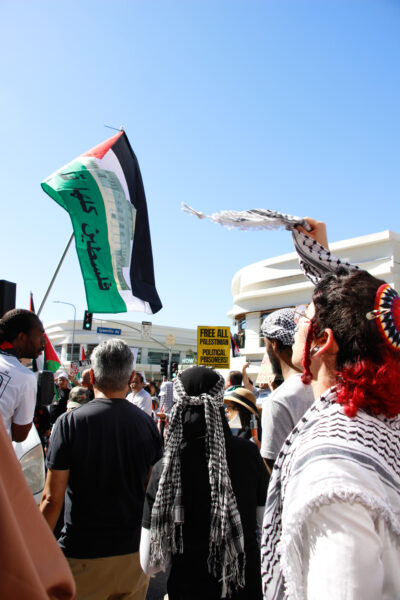
When covering a “Rally for Return: All out for Gaza,” which took place outside the Consulate General of Israel, it surprised me to find Jewish demonstrators, or demonstrators in Jewish garb, in front of my camera. On that Saturday morning, I saw someone with a colorful red, white and blue kippah and red-dyed payot demonstrating in the rally — the first, among a few, visibly Jewish people I spotted at the site.
As this was my first time covering a Palestinian rally, I was hesitant to approach any demonstrators for names or interviews, and instead took the time to listen and observe.
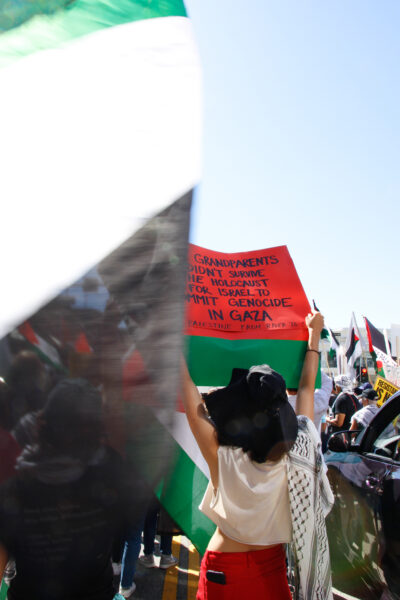
Many demonstrators also carried signs by Jewish Voice for Peace (JVP), an anti-Zionist organization. Other signs alluded to Judaism and Jewish history, such as “Apartheid isn’t kosher” and “My grandparents didn’t survive the Holocaust for Israel to commit genocide in Gaza. Free Palestine from river to sea.”
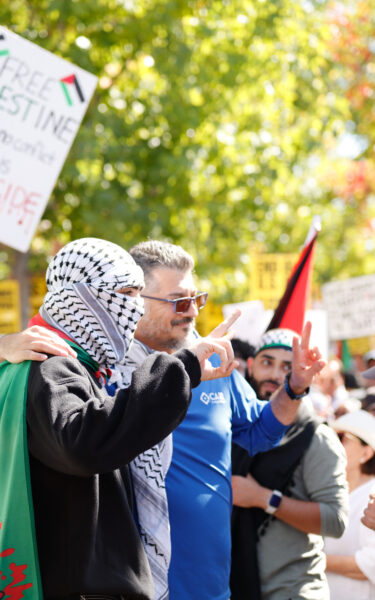
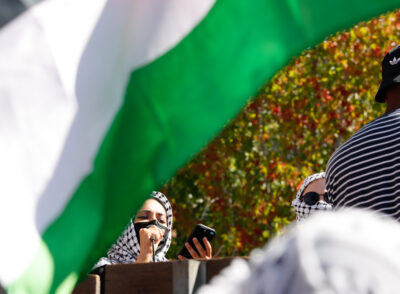
After covering three rallies, one detail I noted was that many demonstrators at the Palestinian rally — especially those using megaphones or microphones — covered their faces, but seemed open and confident in being photographed. A few demonstrators at the Israeli rallies covered their faces as well, but were generally more wary of me as a photographer.
Reaching out to members of the public for information is no easy task under typical circumstances, and it is even more of a challenge at higher-charged public demonstrations.
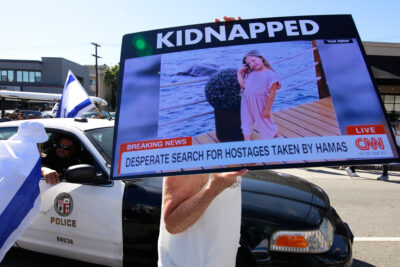
A few times, demonstrators approached me with different requests, or got extremely close to me to try and take information off my press pass.
Towards the end of a solidarity march for Israel along Pico Boulevard, a woman walked over to me, angry and upset because she thought I had taken her photo, and demanded that it be deleted. I declined, stating that it was within my rights to photograph people and events in public view. She videoed me and followed me for a short time before leaving.
As a peaceful crowd for an Israel solidarity walk was quickly growing in a plaza on Ventura Boulevard, a woman who later identified herself as an event organizer walked up to me and pressed me for how and when she could get my photos. That was a question I hadn’t yet gotten at a rally before.
More often than not, people are friendly and civil, but confrontational encounters are the ones that tend to leave a lasting impact. In a time when it’s easy to become overwhelmed, I made an effort to remember the positive moments, too.
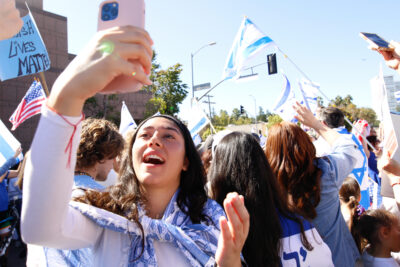
Of the hundreds of demonstrators I could have spoken with at the march along Pico Boulevard, one turned out to be an alum of one of two community colleges I attend. Often, mentioning that I am covering the event as a journalism student sparks interest in people, and has been a good base for starting conversations.
Each day, I remind myself how fortunate it is that I didn’t have to wait in a locked library until a pro-Palestinian protest dispersed and it was safe to exit, or that a professor didn’t suggest targeting Zionist journalists and children in their homes and schools in a social media post, or that an Israeli student wasn’t assaulted and harassed on campus, or that a state Counterterrorism Unit and the FBI don’t have to monitor threats against Jewish students and spaces on my campus.
But even prior to the current war, my time on campus had not been free of offhand comments and decisions reflecting the idea that “Jews don’t count”— another phrase originating from a book title, this one by David Baddiel — or casual remarks that echo Jewish stereotypes and an ignorance of Jewish history.
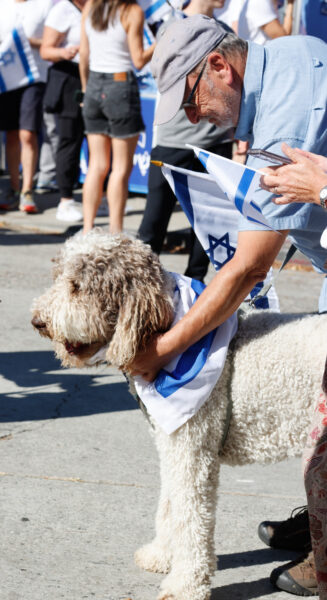
A few moments of much-yearned-for light-heartedness appeared when photographing the pups of the protests. It was heartwarming to see how demonstrators were excited to talk about their four-legged companions. When I approached people to ask for the names of their dogs, some would joyfully mention the Hebrew name of their dog, and others were quick to proudly note that their dog was Jewish, too.
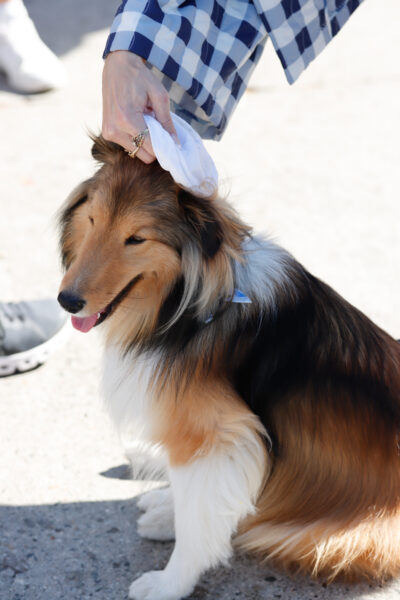
Moments of Jewish joy continue to be the most rewarding to photograph.

